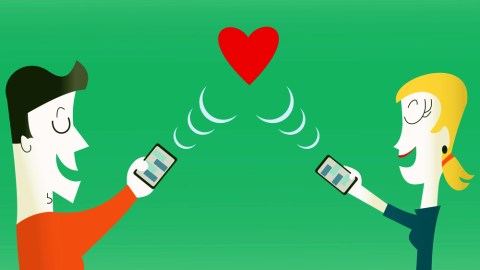Why People of All Ages Are Finding Love & Sex Online

Technology is changing every aspect of life — including how we find love. A recent study conducted by the Pew Research Center indicates that nearly one-third of couples today found each other online. Finding love — and maybe even sex online — is not new. In fact, the first online dating site is reported to be Match.com, launched more than two decades ago in 1995.
According to a 2015 survey conducted by Pew, nearly 15 percent of Americans have found their Valentine online compared to 11 percent only two years earlier. The greatest and most dramatic increase in online dating is among the oldest of Gen Z and the youngest of the Millennials ages 18 to 24 years old. More than one in four (27 percent) of young adults are digital daters today — compared to only 10 percent in 2013.
The same study shows something else less expected — finding love online is not just for Millennials anymore. Mom, dad, and even grandma and grandpa, may be surfing for sex too. The percentage of baby boomers ages 55-64 that report digital dating has doubled from 6 percent in 2013 to 12 percent in 2015. Even many Gen Xers ages 45 to 54 have jumped online to find love and companionship with only 8 percent in 2013 compared to 13 percent just two years later. In fact, only people ages 25 to 34 years old (22 percent) and those 65-plus (at 3 percent) did not show an increase in finding love in cyberspace.
One observer of trends in love online suggests that by 2040, perhaps as many as 70 percent of people will find their significant other in cyberspace. Advances in technology enabling more creative approaches to online dating may drive the projected increase. For example, rather than simply matching profiles of likes and dislikes, real-time activity matching may become the new normal. Leveraging location-based services, the French dating site Happn connects potential couples not by their personal profiles alone, but by scraping daily activities and locations captured from their mobile phones. These revealed behaviors transform finding love into a big data problem and may show that your perfect match may be the person that stands in line with you every day waiting for coffee. Happn’s location-based dating site has already acquired 6 million users and is reported to be gaining nearly 1 million new users per month.
Advances in technology alone do not explain the rise in the number of people finding love online. So why might both young and old choose to meet their future match in cyberspace?
1. Love is being delayed by career and debt. For many, college provides a high probability for chance collisions that can translate into lasting relationships. However, careers take time to develop and school debt makes financial security and future plans less certain. As a result, the search for (or commitment to) a lasting relationship with a college love may be delayed.
2. We think we’re too busy to love. Tethered to work by tech 24/7/365 has contributed to the near global perception of a time scarcity problem. Apparently many of us, regardless of age, believe we are simply too busy for leisure or love. In our perception of a busier and busier world, convenience may be as much a factor in finding companionship as it is for online shopping.
3. Community life is waning. There are key spaces and places that make meeting your significant other more likely. Community- and religion-based activities and organizations have always played a role in “match-making.” However, with participation in community organizations and religiosity on the decline for decades, meeting someone at these traditional places has also declined.
4. People leave their house less often. While cyberdating may offer new ways to meet people, the verve to get off the couch and to go find someone may also be waning. U.S. Department of Transportation statistics indicate that all age groups are making fewer trips today than 20 years ago. In fact, the number of trips made has fallen to 1990 levels. Perhaps dinner and drinks have become too expensive or too cliché, but telecommuting and home delivery may also be reducing the chances of meeting that certain someone.
5. In certain demographics, divorce continues to rise. The greatest increase in divorce rates are among those 50 years old and older. According to one survey conducted by Merrill Lynch and Age Wave, there has been a 700 percent increase in “gray divorces” since the first of the baby boomers reached adolescence. Dating online for those that have been out of circulation for decades may be a convenient (and gentle) way to reenter the dating world.
There is an increasing likelihood that your first date, or your first date in decades, may be judged by the quality of your digital response, rather than the look in your eyes. Are you looking for love online? I’m looking for new insights on how technology is shaping social behavior — so if you have time between digital dates, drop a few bytes in the comments.
—
Image from Shutterstock





